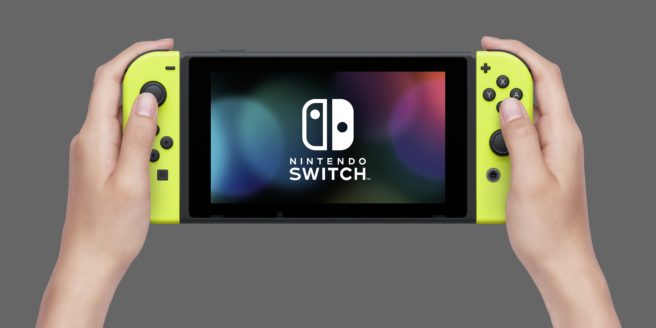Nintendo on the development of the Joy-Con, integrating Switch hardware/software, more
During the Q&A section of its latest financial results briefing, Nintendo was asked about the design concept for Switch’s Joy-Con. Senior executive officer Ko Shiota, managing executive officer Shinya Takahashi, and Shigeru Miyamoto all weighed in on this.
Shiota said that the “Joy-Con was designed from the start of development as a device that could have a variety of uses besides being a game controller, including the possibility of attachment to something else for play.” Nintendo also thought about the Joy-Con could be used by setting it in an attachment. Takahashi later added that Nintendo “considered play using just the hardware and software, as well as play in combination with other things.”
Miyamoto also had some interesting words about Nintendo Labo, as he said he anticipates it becoming “a series of products once it is released and enjoyed by many people.” He additionally noted that Nintendo “will work to make Nintendo Labo a new experience of success for the company”.
Below are the full comments from Shiota, Takahashi, and Miyamoto:
Shiota:
As was mentioned in the response to the first question today, Joy-Con was designed from the start of development as a device that could have a variety of uses besides being a game controller, including the possibility of attachment to something else for play. It became clear during development that despite its compact size, Joy-Con could pack a number of sensors, so we began thinking that something fun could be developed if we took advantage of the small size
and performance of Joy-Con and set it in some kind of attachment. The design of Joy-Con was completed with that concept in mind. Hardware developers always keep the possibilities of various software titles in mind when they decide on the hardware specifications. But in our company, junior hardware developers talked directly with software developers, discussing the concept of fitting Joy-Con in some kind of attachment and all sorts of other crazy ideas while the hardware and software developers worked as one to decide on the specifications.Takahashi:
In thinking about how we could best get as many people as possible using Nintendo Switch in all sorts of ways, we considered play using just the hardware and software, as well as play in combination with other things. An example of the former is 1-2-Switch, released at the same time as Nintendo Switch and designed as an introduction to Nintendo Switch. This software was produced in parallel with the hardware to provide an experience of the many new kinds of play that the various features of Nintendo Switch make possible. An example of the latter is Nintendo Labo, which is a product that utilizes designs dreamed up as Nintendo Switch features during development. We will keep on thinking of ways to integrate hardware and software for both kinds of play, and I believe you will be pleasantly surprised.
Miyamoto:
In answering the first question, I mentioned my sense of reassurance with Nintendo’s current personnel. But if you asked me what kinds of unique Nintendo products they should create, I would say that there are no clear-cut answers and that by accumulating experiences of success, they will find them by themselves.
We’ve had repeated discussions inside the company about how we can win approval from users for Nintendo’s uniqueness as new video game systems are released featuring the latest technologies, but there are no clear-cut answers to that either. Wii is a much-talked-about example of Nintendoʼs experience of success, but the developers began to rethink their hardware design after receiving feedback from global users of Wii Sports and Wii Fit, saying things like the Wii Remote should have had different design features, or should have been small enough to attach to the leg. Because of that rethinking, our developers thought constructively about the advantages of miniaturizing the game controller, and when the technology advanced to give controllers greater functionality in a smaller size, it was not lost on them that here was an opportunity to create a console-type game system that could be carried around like a handheld video game system. That led to the development of Joy-Con, and to the concept of combining Joy-Con with cardboard constructs.
Nintendo Labo has only just been announced, but I expect this to become a series of products once it is released and enjoyed by many people. We will work to make Nintendo Labo a new experience of success for the company.
